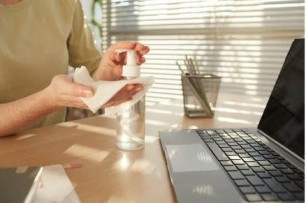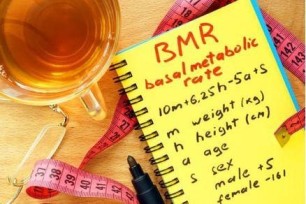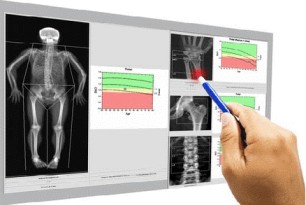General Insurance Blogs, Articles & Updates by - Magma HDI
Have us call you
- RENEW YOUR POLICY
- BUY NEW POLICY

Learn about these efficient ways to ensure health and safety in your office post-Covid
The pandemic was emotionally challenging for everyone globally. The sudden shutdown of the world was something that no one ever saw coming or would have imagined. The office-goers had to undergo an acute struggle of adapting themselves to this drastic transition.
But, now, with successful vaccination drives and improved safety standards, the workplaces are opening again, and people have started resuming their work. However, life before the pandemic and after the pandemic are two very different situations. So, while returning to your work again, it is crucial to understand that you have to be extra careful of your office premises with robust preventive measures to avoid exposure to the virus.
This post covers all the essential health and safety measures an employee and employer needs to follow. Continue reading to get the best Covid tips for your safety in the office!
For Employers:
• Before the office re-opens, ensure that it is properly disinfected and sanitized. Consider that every office space, such as equipment, tables, chairs, stationary, and other utilities.
• Create a Covid safety plan and guidelines for all the employees to ensure they do not catch an infection.
• Ensure regular temperature screening and measurement of oxygen levels before the employees enter the office. It will help to catch early symptoms and make sure other employees are not affected.
• Make masks mandatory even indoors. It is to prevent getting in contact with the virus.
• Make both COVID vaccination mandatory for the employees. If certain employees have not taken their vaccines yet, encourage them to take the vaccine or help them in getting the required vaccination. Sometimes, in-office vaccination camps can also help employees get vaccinated in the office premises.
• During meetings, ensure that the chairs are placed at a safe distance. It is advisable not to have too many employees in one room. Similarly, cafeteria or canteen area should be sanitized and have a strict code of conduct. Avoid any large social gatherings inside the office premises.
• If an employee demands sick leave, do not encourage them to come to the office and work. Instead, make sure you plan out paid sick leaves to protect other employees’ health.
• Use technology for the best and safety measures. With all the advanced options available, try to make things as contactless as possible, including the attendance machines.
• Limit all your business travel. Businesses must follow all the deadlines and guidelines issued by the government.
• Lastly, keep all the health essentials nearby and available. These include sanitizer, tissues, masks, napkins, soap, and doctor-on-call.
For Employees:
• As an employee, you need to take care of your hygiene and avoid contact with any person.
• Use sanitizer often, even for your keys, wallets, and other personal belongings, whenever you enter the office.
• In case you feel sick, ask for sick leave. Do not be in the mindset of, "I need to go; I will miss my salary." While your salary is crucial, you could spread the virus in your office.
• After returning from work, make sure you take a bath or sanitize yourself. It helps you protect your family.
• Keep your medical insurance intact. The pandemic has pushed most of the businesses operating online with a noticeable increase in online purchases. Similarly, buying online health insurance helps you avoid visiting the insurer's office and with lower insurance premiums for your policy.
• Avoid gatherings in the office as much as possible, and make sure you use masks whenever needed. The same should be followed even if you are vaccinated.
Collective efforts can make the return to the pre-pandemic life more conveniently. With positive intent, work enthusiasm, and by adhering to strict safety and hygiene standards, businesses and employees can ensure a safe physical return to the workplace. So, get your office bags and formal ready. The good old 9 to 5 days are coming back soon.
Click HERE to secure your health with the best health insurance plan.
Disclaimer: The information provided above is for illustrative purposes only. To get more details, please refer to policy wordings and prospectus before purchasing a policy.

Nine habits that are killing our metabolism
Metabolism constitutes the chemical activities that repeatedly occur inside your body that keep your organs regularly operating, such as breathing, cell repair, and food digestion. Your metabolic rate regulates the number of calories you burn while also maintaining bodily balance by monitoring blood sugar, cholesterol, and blood pressure levels.
However, the metabolic rate tends to slow down as you age. And some unhealthy habits accelerate the process. This invites health problems and makes our body vulnerable to infections. Maintaining a proper metabolism keeps the body in good shape and powers the organs to perform to their best capacities. But, we practice a few habits that negatively impact our metabolism at an alarming rate. Let’s look below at the mentioned factors that could be killing your metabolism.
1. Eliminating breakfast:
Needless to say, breakfast is the kick-starter of the day. It is the most important meal that no one should skip. Since our metabolism slows down during sleeping hours, eating in the morning is a way to provide ample calories for the entire day.
2. Excessive sitting:
Sitting for hours causes your body to go into energy-saving mode. This impedes your metabolism and impairs the body's capacity to control blood sugar, blood pressure and break down body fat.
3. Insufficient consumption of protein:
Protein fuels your muscles, and muscles are significant for metabolism. Also, protein improves satiety and is essential for maintaining a healthy weight.
4. Ignoring the importance of strength training:
The more active muscular tissue you have, the greater is your metabolic rate. Therefore, strength training is a vital component of metabolism since it directly connects to muscle mass.
5. Inadequate hydration:
A recent study proves that consuming half a litre of water improves metabolic rate by 30% that lasts for about an hour. So, by staying hydrated throughout the day, you'll have the benefit of a faster metabolism.
6. Poor sleep schedule:
You'll have a slower metabolism and hormone abnormalities if you don't get enough sleep for several nights in a row or have difficulty sleeping due to any medical condition. An average sleep time should be at least 07 hours a day.
7. Eating fast food regularly:
Junk food already adds a lot of calories, but it also slows down your metabolism as high-fat food takes longer to digest.
8. Feeling tense frequently:
Cortisol, a hormone produced by the body whenever stress intensifies. Cortisol significantly increases hunger, comfort food cravings, reduced desire to exercise, and poor sleep quality, all of which negatively influence metabolism. So, keep stress away for both mental and physical well-being.
9. Having a warm room to sleep in:
Our body responds indifferently to the surrounding temperature. Sleeping in a chilly environment can boost levels of brown fat, which burns calories to produce heat. The optimal nightly temperature is 19ºC.
We are sure you practice more than five of these bad habits unknowingly that affect your metabolic rate, making you unhealthy and inviting disorders. One can never elucidate the importance of taking care of the body at every age. Apart from these habits, we usually have another habit of not prioritizing and securing our finances against undesired health conditions. We simply recommend you stay in your best possible shape and back yourself up with insurance. If you haven’t protected yourself with a health insurance cover, rather than opting for conventional methods to purchase health insurance, buy online health insurance and get yourself a chance to bag great deals on your purchase.
To browse online health insurance, click HERE .
Disclaimer: The information provided above is for illustrative purposes only. To get more details, please refer to policy wordings and prospectus before purchasing a policy.

Seven useful exercises that can improve your bone density to make you feel strong
Bone density lessens when they lose calcium faster than the body can restore. This condition is known as osteoporosis in the medical field. Both women and men can develop osteoporosis, although females are more vulnerable since their bones are comparatively smaller. There is an increased loss of bone density during menopause because of estrogen decline. For males, any disease that causes a drop in testosterone might raise the risk.
Osteoporosis is one of the most severe health conditions faced in India. Approximately 50 million people in the country suffer from low bone density conditions, which demand prompt attention.
Exercising fueled with good nutrition will help you keep these problems at bay if you start early. You can avoid this condition with two things, a good workout and healthy eating habits. However, if you have the condition already, it’s best to consult your doctor and proceed further.
In this blog, we’ll tell you the top 07 exercises that can help you increase your bone density and make you stronger.
Exercise 1: Foot Stomps
• Stomp your foot on the ground. Just like crushing a cold drink can.
• You have to stomp 4 times on each foot.
• Exercise 3-5 sets.
Exercise 2: Standing on a single leg
• Grab onto something which will help you maintain balance when you stand on a single leg.
• Lift any of your legs and place your raised foot on the inner thigh of the other leg.
• Hold the same position for about a minute.
• Now, repeat similarly for the other leg.
Exercise 3: Squats
• Stand with your feet hip-width apart. Your hips, toes, and knees should be pointing forward.
• Bend your knees and stretch the buttocks backwards. Make sure your knees don’t go beyond the toes, and your heels are bearing all your weight.
• Rise and repeat the movement 10-12 times. Do not overstretch yourself.
Exercise 4: Ball sit
• Sit on an exercising ball & keep your feet flat on the ground.
• Try keeping the back straight and maintaining your balance on the ball while doing it.
• Keep your arms out at your sides, palms facing front. Once done, hold that position for a minute.
• After each set, stand and rest. Apply the same for a new set!
Exercise 5: Hip leg lifts
• Stand with your feet at hip-width apart.
• Put your weight to your right foot.
• Swing your left foot and raise it to the side. Make sure you keep the leg straight when you perform this exercise. Also, do not go beyond the 6 inches mark off the ground.
• Lower the leg.
• Perform 10 to 12 repetitions and return to your standing position.
• Repeat the same exercise with another foot.
Exercise 6: Bicep curls
• Stand straight with a barbell / dumbbell in each hand, resting your elbows at your sides. Extend your forearms in front of you. Bend your knees slightly for an ideal posture.
• Bend your elbows and bring the barbell/dumbbells up to your shoulders. Hold for a second at the peak and try to squeeze the bicep muscle.
• Come back to the starting position.
• Do 10-12 repetitions and perform a couple of sets.
Exercise 7: Shoulder lifts
• Stand with your feet shoulder-width apart, chest high, shoulders squeezed, head straight, and abs tight. Hold the dumbbells/weights on either side.
• Raise the dumbbells just above shoulder level using only your shoulders and arms.
• Return to the initial position.
• Do 10-12 repetitions for the first set. Go for another set, only if possible.
When you perform these workouts, make sure to supplement the growth with proper nutrition. Consume food that has a good concentration of calcium content. Try to naturally increase calcium intake rather than depending on medicines or supplements.
Osteoporosis may make your knees weak, but health insurance will help you lift yourself up when the going gets tough. Don't let your finances go weak. Get health insurance that will cover your journey towards being strong again.
Click HERE to know about the health insurance plan that will secure all your medical needs.
Disclaimer: The information provided above is for illustrative purposes only. To get more details, please refer to policy wordings and prospectus before purchasing a policy.

Six things that you must be aware of while buying a superbike
Are you like one of those superbike enthusiasts who would stop talking to their friends only to watch a superbike pass by? Do you also have a dream of owning a superbike at least once in your lifetime? If yes, well, then you have come to the right place!
When we say a superbike, it does not include the small capacity sports bike. We are talking about the ones with a liquid-cooled, four-stroke, in-line engine that produces a sweet humming sound. The options for superbikes in India have amplified a lot recently, but only knowing about the model names is not sufficient and would not help you out in any way.
So here are six things you must be aware of if buying a superbike.
1. Cost:
The engine contributes massively to determining the price of superbikes. A good superbike has an engine between 800 ccs to 1200 cc that derives power usually used in four-wheeled vehicles. A good superbike in India will cost you somewhere between Rs 5 lakh to Rs 40 lakh, for which you can also consider applying for a bike loan. But apart from the initial cost of buying, maintaining a superbike can at times be expensive because of the high-quality fuel requirement, repairs, and servicing. Plus, the bike insurance premiums also add up to the overall maintenance cost.
A cheaper option can also be a used superbike; this can be financially beneficial. But there are always a whole lot of things to consider before deciding to buy a used superbike.
2. Fuel:
You just can't compromise on the fuel quality for your superbike as it can do significant damage to your engines. The superbike manufacturers recommend fuel quality for each model based on the octane. In simple words, the higher the octane, the better the fuel grade. But this can be a problem at many fuel stations in India. For example, most superbikes require 95 RON; this is a fuel rating not available in India. So, before buying a superbike, check whether such high-quality fuels are accessible to you. Along with fuel, other liquids like engine oil and coolant also need to meet the standards.
3. Servicing:
Servicing for superbikes is expensive as most parts are not readily available. Also, you can't be sure that you would find good, adequately trained, and knowledgeable mechanics in your vicinity. Due to the condition of Indian roads, we also recommend quicker service schedules.
4. Insurance:
Basic bike insurance is a necessity for every motorcycle. However, for your superbikes, go for comprehensive bike insurance with multiple add-ons because the superbike parts are costly, and good insurance will be beneficial.
5. Skills:
Riding a superbike requires a lot of patience, practice, and caution. Multiple driving schools teach you how to ride a superbike. You often don't realize the amount of power a superbike has, that a small mistake can cause serious injuries. You must be capable enough to handle the strong machine with ease.
6. Safety gear:
A regular helmet is not enough when riding a superbike. You will have to invest in a good-quality helmet, riding suits, gloves, and boots.
Superbikes are for those who dream for bigger and faster things, but the greed for speed creates a need for safety. Such engineering marvels are full of power and require riders with a sense of responsibility and safety. Think about the usability of a superbike in your life, understand the cost and other requirements, and purchase one to feel that adrenaline rush through your blood.
Click HERE to buy insurance that will ensure the safety of your bikes.
Disclaimer: The information provided above is for illustrative purposes only. To get more details, please refer to policy wordings and prospectus before purchasing a policy.


